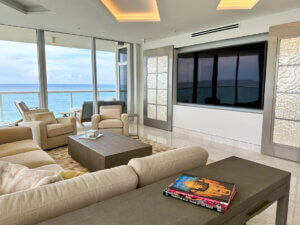A prospective client contacted us inquiring about the cost to repair a home built with tainted Chinese drywall. The 3,400 s.f. two story home built by a large developer in south Florida has been sitting empty and he was investigating the purchase at a reduced rate. I informed him about the many issues and associated costs that would help him make the decision to purchase or look for another home. Numerous articles have been written on the alleged damages that have been created due to the installation of the tainted Chinese drywall. During the building boom between 2003 and 2007 many homes were built with the tainted Chinese drywall due to the shortages from U.S. manufacturers. Suppliers looked for outside resources such as Chinese drywall manufacturers to fulfill the demand, not realizing the implications that surfaced years later. We have made it our responsibility to learn and understand the consequences the drywall has had on families and elements of the built environment.
To date there has been documentation of corrosion of A/C coils, electrical wiring, metal finishes such as plumbing components, hardware, and personal items such as televisions, computers, video equipment and kitchen appliances. What remains to be investigated is the possibility of absorption of micro-organisms into porous finishes such as wood flooring, carpeting, stone surfaces, clothing, fabric covered furniture and many other household items.
Ongoing research indicates numerous mitigating issues that may arise in the future once the house is renovated. In order to understand the complications I offer the following:
- In order to remove the drywall, all cabinetry including counter tops and back splashes will have to be removed in the kitchen and bathrooms. Prior to this taking place, all sinks, faucets and other plumbing apparatuses will have to be removed. Typically in bathrooms, green board or Hardiboard is used for wall tile application. Unfortunately, from our experience drywall subcontractors working in large home developments tend to provide the cheapest installation possible and don’t use the better grade materials. Due to these experiences the drywall in the bathroom areas would have to be checked to verify tainted Chinese drywall was not used.
- All wall base, crown moulding and interior doors and frames, carpeting, padding and tack strips would have to be completely removed.
- All built in cabinetry, chair rail, ornamental columns and miscellaneous finishes over the drywall will have to be removed.
- All electrical light fixtures, switches, outlets, electrical wiring, speakers and speaker wiring, alarm panel and wiring, pool/spa panel and wiring, interior high hat lighting, electrical panel, intercom devices and wiring, telephone wiring, and exhaust fans will have to be completely removed.
- Towel racks, mirrors and medicine cabinets all have to be removed.
- All air conditioning interior and exterior units including all duct work, copper refrigerant lines and A/C vent covers will have to be removed. The duct work can hold micro-organisms from the tainted Chinese drywall.
- All batt ceiling and wall insulation needs to be removed.
- Many people have hired inspectors to review their home to verify if Chinese drywall was used. What most people don’t realize is that the Chinese drywall that was imported was 1/2″ thick. Many inspectors have gone up to the roof area to look at the back of the ceiling drywall for demarcation. What they don’t realize is the Florida Building Code requires 5/8″ drywall on the ceilings. 5/8″ drywall was not widely imported but purchased from local suppliers. Furthermore, some Chinese drywall is not marked with any manufacturers name.
Ongoing research is being conducted as to the correct methods of removal of drywall dust from stud wall tracks, outlet boxes and other devices. Chinese drywall is known to produce chemical off-gas organic vapors. Those vapors may impede personal items which will need to be cleaned. Cleaning devices such as HEPA vacuums and a micro-cleaning process for personal items such as clothing, linens, leathers, and upholstered furniture will have to be instituted.
Ongoing research and testing by our government has yet to provide a protocol for Chinese drywall removal. There are contractors performing renovation work not instituting the proper precautionary measures for their workers. Workers should be using protective equipment such as ventilated face masks, gloves, and dedicated work zones to minimize the travel of dust within the home.
For two days the first week of November a group of scientist, indoor air quality contractors and other researchers met in Tampa to review the ongoing issues pertaining to the Chinese drywall issue. There is ongoing research which we in the industry hope will provide some concrete guidelines for Chinese drywall removal in the near future.
After reviewing my clients home characteristics we determined that it was almost more cost effective to tear the house down and not take any chances for the possiblity of future problems. Until we know the full extent of damage to materials and human contact we should guard against the worst case scenerio.









